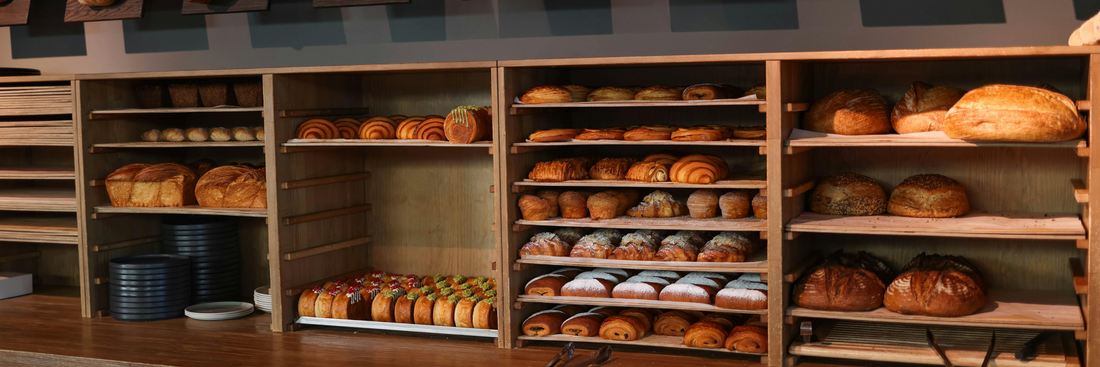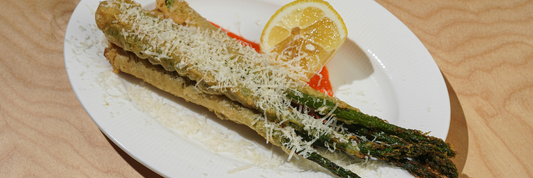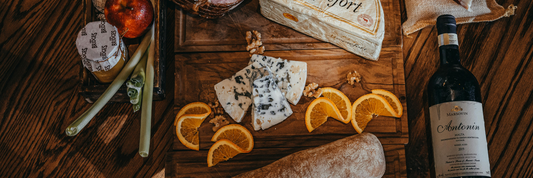Nothing breaks a baker’s heart more than watching a perfect loaf go stale by evening or seeing once-crispy cookies turn soft overnight. Extending shelf life isn’t about adding chemicals, it’s about understanding science, managing moisture, and choosing the right packaging that supports freshness and sustainability.
At KimEcopak, we believe natural freshness and eco-conscious packaging go hand in hand. In this guide, we’ll walk you through how to extend the shelf life of baked goods naturally with science-backed methods and eco-friendly packaging solutions trusted by bakeries across Canada and the U.S.
- How Long Does Bread Last in the Pantry, Fridge, and Freezer?
- How to Store Muffins: Keep Them Fresh, Moist, and Delicious
- How To Store Banana Bread for Maximum Freshness (And Make It Last Up to 3 Months)
Why Shelf Life Matters for Every Bakery

The shelf life of your baked goods affects much more than product quality, it impacts cost control, customer satisfaction, and long-term profitability. Short shelf life means higher waste, more re-bakes, and inconsistent product experiences.
For retail bakeries, a product that lasts one extra day can make the difference between profit and loss. For wholesalers or online sellers, it determines how far your goods can travel without losing freshness.
When managed naturally, shelf life improvement leads to:
- Reduced daily production waste
- Better texture consistency for longer periods
- Higher perceived product value from customers
- More stable inventory and packaging efficiency
In short, learning to preserve bakery freshness naturally is one of the smartest cost-saving moves your business can make.
What Shortens the Shelf Life of Baked Goods
Before you can extend it, you must know what’s shortening it. Most spoilage problems come from physical and biological reactions that occur right after baking.
Moisture migration is the biggest culprit. Products like bread and cake lose internal moisture quickly, becoming dry, while cookies or pastries may absorb ambient humidity and turn soft.
Microbial growth happens when cooling or storage conditions allow mold spores or bacteria to thrive, particularly in high-moisture goods such as sponge cakes or filled pastries.
Starch retrogradation, a natural process in baked goods, causes starch molecules to crystallize again after baking, leading to the hard or stale texture we associate with “day-old bread.”
Finally, oxidation changes flavor, color, and aroma over time especially in products containing fats and oils. Understanding these mechanisms allows you to counter them naturally through better recipes, processes, and packaging.
Natural Methods to Extend Shelf Life in Bakeries

Use Natural Moisture Retainers
Natural humectants like honey, molasses, or invert sugar help maintain internal moisture, slowing down the drying process. Ingredients rich in natural sugars and fibers, such as fruit purees or oat flour, can also keep texture soft without preservatives.
You can test different ratios by replacing a small portion of refined sugar with honey or syrup. For breads, natural pre-ferments like sourdough improve water absorption and retention allowing loaves to stay moist longer while enhancing flavor.
Control pH and Fermentation
A slightly acidic environment naturally slows mold growth. Bakers can achieve this by using fermented flours, cultured dairy ingredients, or apple cider vinegar in recipes. For example, sourdough bread naturally resists spoilage for days due to its organic acid profile.
Controlling pH doesn’t alter taste if done properly, it can even enhance flavor depth and improve dough elasticity.
Maintain Strict Cooling and Hygiene Practices
No ingredient can fix poor sanitation. Rapid cooling is key to preventing condensation, which encourages mold. Use clean, ventilated racks and allow products to reach room temperature before packaging.
Keep all storage surfaces and containers sanitized, and establish a FIFO (First In, First Out) system to ensure older batches are sold first. Even small improvements in hygiene can dramatically increase shelf life consistency.
Choose Breathable, Eco-Friendly Packaging
After baking, packaging is the most important factor in shelf life extension. Plastic wrap can trap humidity and cause sogginess; on the other hand, unprotected air exposure dries goods too quickly.
The solution is to use grease-resistant, breathable kraft packaging that balances airflow and protection. This allows excess moisture to escape while maintaining internal freshness.
For example, KimEcopak’s Kraft Bakery Boxes and Compostable Bakery Bags are designed specifically to help bakeries preserve freshness naturally.
Request a free sample today and see the difference for yourself.
Optimize Storage Temperature and Humidity
Every baked good has an ideal storage condition.
- Breads prefer cool, dry spaces between 18–22°C.
- Cookies and crackers last longer in airtight containers with humidity below 60%.
- High-fat or cream-filled products should be stored in refrigeration but sealed to prevent odor absorption.
Avoid direct sunlight or excessive refrigeration that can alter texture or color. When stored properly, even additive-free baked goods can maintain quality for up to twice their normal shelf life.
Daily Practices to Naturally Extend Shelf Life
Beyond recipe changes and packaging upgrades, daily discipline matters.
- Cool properly: Always let products cool to room temperature before boxing.
- Seal efficiently: Ensure all boxes or bags are closed tightly to prevent air leaks.
- Rotate stock: Label every batch and follow FIFO to prevent expired items from mixing.
- Train staff: Teach your team how temperature and handling affect shelf life.
- Track performance: Record when each product type begins to lose freshness and identify trends.
Natural shelf life extension is achieved not by one change but through consistent, well-planned habits across production, packaging, and storage.
FAQ about How to Extend the Shelf Life of Baked Goods Naturally

Q: How can I make my baked goods last longer naturally?
A: Use natural humectants like honey, control moisture and pH, cool properly, and use breathable kraft or compostable packaging instead of plastic.
Q: Does sourdough bread last longer than regular bread?
A: Yes. Its natural acids prevent mold and help retain moisture, giving sourdough a longer natural shelf life without preservatives.
Q: What’s the best packaging to extend bakery shelf life naturally?
A: KimEcopak’s kraft boxes and compostable bakery bags allow airflow while protecting texture and freshness ideal for preservative-free baked goods.
Q: Can eco packaging really keep baked goods fresh?
A: Absolutely. Quality kraft and compostable materials regulate humidity and reduce staling, helping maintain freshness naturally.
Q: How do I know if my product’s shelf life improved?
A: Track appearance, aroma, and texture daily for several batches, comparing new storage and packaging conditions with your previous system.
Conclusion
Extending the shelf life of baked goods naturally is both a science and a craft. It starts with understanding moisture and fermentation, continues through clean handling, and ends with packaging that protects freshness without chemicals.
At KimEcopak, we help bakeries make this transition easily with eco-friendly, breathable packaging designed to preserve natural freshness while reflecting your brand’s commitment to sustainability.
Whether you’re a local café, wholesale bakery, or growing B2C brand, you deserve packaging that supports your passion for quality and the planet.
-
LEARN MORE about How "Subscribe for a Happy Life" will benefits your business HERE!
-
LEARN MORE about Kim Vu, sharing on the challenges she faced as a former restaurant owner, and how she overcame them to create KimEcopak HERE!




